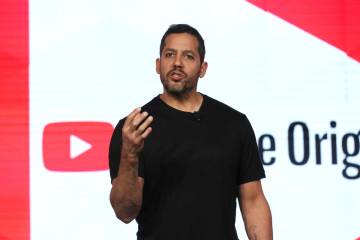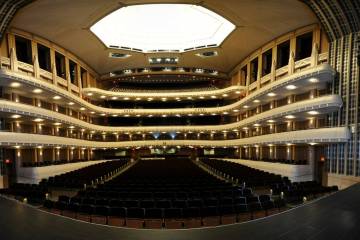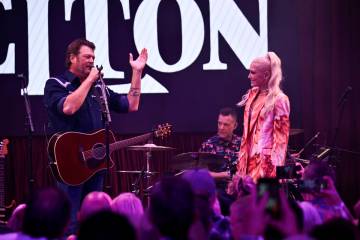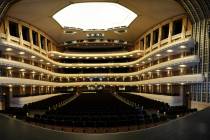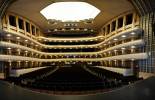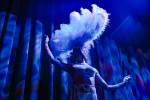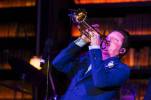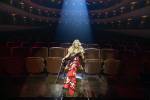Guest artists energize Philharmonic’s first concert of year
The recent arrival of 2015 was celebrated and confirmed by the Las Vegas Philharmonic on Saturday as the orchestra welcomed not one but two outstanding guest artists to share the stage in The Smith Center’s Reynolds Hall.
Both conductor Rei Hotoda and violinist Bella Hristova left indelible marks on the audience through their artful musicianship and technical mastery. The two women seem to be a perfect pairing. Hotoda is petite and brisk of movement.
Hristova, while not as tiny as the conductor, is equally crisp. Their energy, however, seems to flow from internal sources; neither is given to pointless gestures or posing for the sake of drama.
The program led off with Maurice Ravel’s “Mother Goose Suite” (“Ma Mere L’Oye”) originally composed for piano but transcribed for orchestra three years later. It is this version that is performed more frequently now. Compared to the artistic strides the orchestra has made in its last three outings, the evening’s opening work seemed, well, ordinary. There were no glaring technical or musical gaffes but Ravel did not fare well in the lifeless performance.
It was a different story when Hristova took the stage and immediately took command of the audience with a dazzling performance of Max Bruch’s “Violin Concerto No. 1.” From the outset, Hristova drew a broad palate of tonal color from her highly valued violin, a 1655 Nicolo Amati once owned by the late Louis Krasner.
The first movement is an extended dialogue between soloist and orchestra, giving the soloist wide-ranging opportunity to make the violin sob, or even laugh, an exceptional demonstration of technique and emotional range.
The second movement, which follows without pause, shows a romantic quality but works to a passionate climax.
The third movement, “Finale,” presents the soloist with considerable technical challenge in the form of copious double and quadruple stops (playing two and even four strings simultaneously). The prevailing effect is one of brilliance and fire.
The concert was billed as the orchestra’s annual “Rising Star” program.
Given her exhausting schedule over the past two seasons, Hristova appears to be on the fast track.
Following intermission, we heard Antonin Dvorak’s “Symphony No. 8 in G Major.” Dvorak was the son of a butcher from a tiny town 10 miles north of Prague in what was then known as Bohemia. He never lost his love for his native land and this symphony, like most of his musical output, shows the strong influence of Bohemian (now Czech) music and song. Musicologist Edward Downs says he produced the work “…amid a floodtide of inspiration so swift that his pen could hardly keep pace with it.”
The first movement features long, flowing lines in a typically Romantic mixture of warm instrumental colors. The principal theme is a light figure for solo flute which suggests bird-song. Following the second movement, an “Adagio,” a waltz-like third movement recalls Tchaikovsky — or even the younger Strauss — but its peasant-like quality really calls to mind the Austrian folk dance, the Laendler. Movement No. 4 builds to a whirling, swirling climax that is unmistakably Dvorak.
Volumes of praise go to the horn section for its extra measure of output and to the entire orchestra for demonstrating how, in the space of minutes, it can grow from “ho-hum” to WOW!
REVIEW
Who: The Las Vegas Philharmonic Orchestra
When: Saturday
Where: Reynolds Hall at The Smith Center for the Performing Arts
Grade: A-




